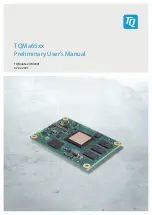
To secure the boards together, you could add standoffs and screws to mount a Qwiic-enabled device that have the
standard 1.0"x1.0" sized board. Keep in mind that this will block a few of the header pins below so make sure to
plan accordingly.
Depending on the location of the mounting holes, you may need to make an adapter to hold the Qwiic-enabled
device securely. Below is an example with mounting holes on the same side instead of diagonal. A piece of
cardboard was cut out as shown in the image below. Depending on your personal preference, you could also laser
cut, CNC, or 3D printer to make a more sturdy panel for those that need a stronger material.
Example
Note:
If this is your first time using Arduino IDE or board add-on, please review the following tutorials.
Installing the Arduino IDE
Installing Board Definitions in the Arduino IDE



























